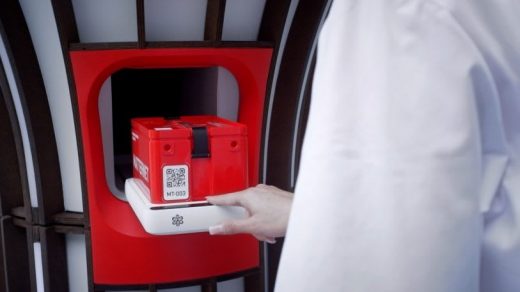This onion-shaped sculpture is actually a delivery drone launch station
In a few weeks, when a new drone station is installed outside a hospital in Lugano, Switzerland, hospital staff will put samples that need to get tested inside, and the station will autonomously load those samples into a drone. Then the top of the onion-shaped tower will unfurl to launch the drone into the air—sending the package to a nearby lab for quicker results than would otherwise be possible.
The drone station, made by the drone delivery startup Matternet, is the next step in the company’s push to make healthcare more efficient and cut costs. The startup first began working with hospitals in Switzerland in 2017, in partnership with the country’s postal service, and then began working with a hospital in the U.S. last year in partnership with UPS, which got the first FAA approval to operate as a drone airline. Additional hospitals will begin using the service this year. When samples need to be delivered from a clinic or satellite facility of a hospital to a main lab, the standard practice “typically takes between one and two hours, even if it’s urgent,” says Andreas Raptopoulos, cofounder and CEO of Matternet. “With our system, we’ll get it in a matter of minutes.”
Saving time has obvious benefits for patients, especially if someone needs immediate treatment (in some cases, Raptopoulos says, surgeons even need to test a sample of tissue mid-surgery—meaning that the patient is waiting under anesthesia while the sample goes to a lab). That affects the cost of care, since each minute in an operating room costs more. And instead of running multiple labs, a hospital could potentially rely on only one lab. “Just to give you a sense of the opportunity here, every lab that a hospital is able to shut down eventually is probably around $1 million of savings per year for that hospital system,” he says. Hospitals and clinics are billed an annual rate, so making 10,000 deliveries costs no more than 1,000.
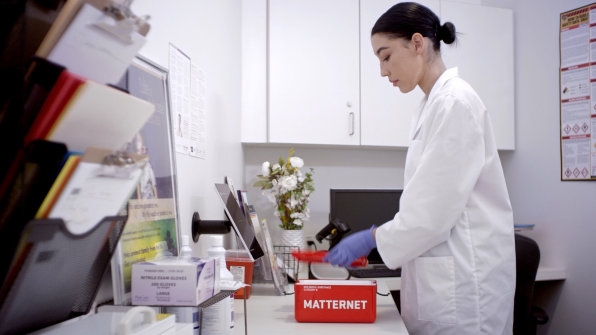
Until now, the service has used an on-site attendant to take samples from medical staff, load a drone, and launch it. But to scale-up the system, the company says that more automation was necessary, and it began testing an early version of an automated station in 2017. Now, when someone takes a patient’s blood sample, they’ll use an app to enter the details of the package, scan their badge, and put it in the new drone station themselves. The station automatically confirms that the QR code on the package matches the app, and loads it onto a drone, which is loaded with a precharged battery stored inside the tower. Then the “petals” on the roof of the tower open to let the drone out. There are multiple slots, so medical workers can pre-stage the next sample if a delivery is already out.
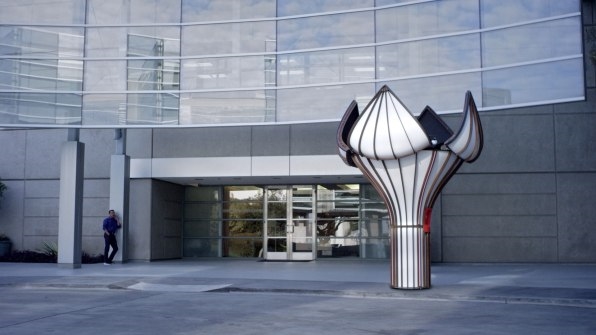
All of this is designed to happen near other people. At the hospital in Lugano, the station is directly outside the back of the station, in a park-like area where people eat lunch and take breaks. “It’s critical for the efficiency of the system that it’s not too far away from where blood is being drawn, or where the lobby is, in the case of a lab application like blood transport,” says Raptopoulos. The tower is tall enough, at eight feet, to keep the launch away from people walking by, and the top of the drone station is designed to protect people in case there’s a problem and the drone falls, since its parachute won’t deploy at low heights.
“We want to fundamentally create a protective umbrella around the station,” he says. (The company had challenges last year with its existing drone system: In one case, a drone had to make an emergency landing, and in another case, the parachute cord broke when the parachute tried to deploy, though no one was injured. An independent board of safety experts concluded that it was safe to continue operations.) The rounded shape is also designed to withstand heavy wind and rain, and when the petals open, snow will slide off.
While another medical drone delivery company, Zipline, focuses on the developing world and rural healthcare in the U.S., Matternet’s focus is in American and European cities. It wants to broadly expand, including connecting medical suppliers to hospitals. McKesson, the medical supply and equipment company, invested in the startup through its venture arm in January. “We really believe that healthcare should have at its disposal the most advanced logistics methods that technology can provide,” says Raptopoulos. “So our vision is that in every city, around every major healthcare system in the country, and in many countries, you have this type of new capability that allows medical items to be transported in a very efficient, very fast way.”
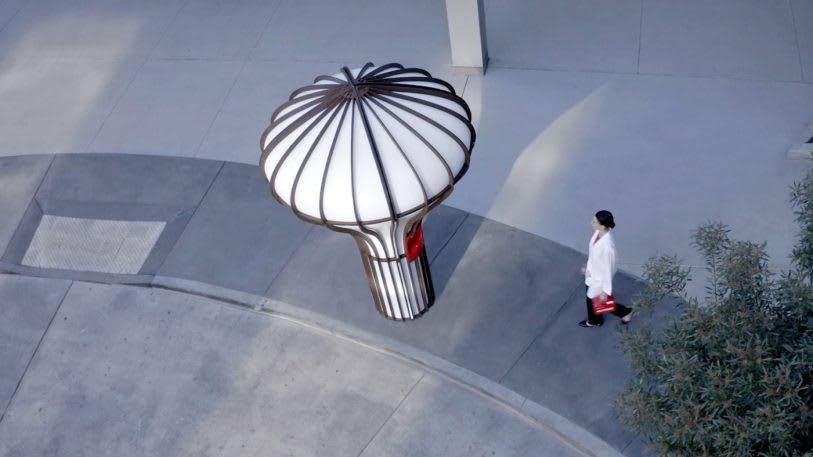
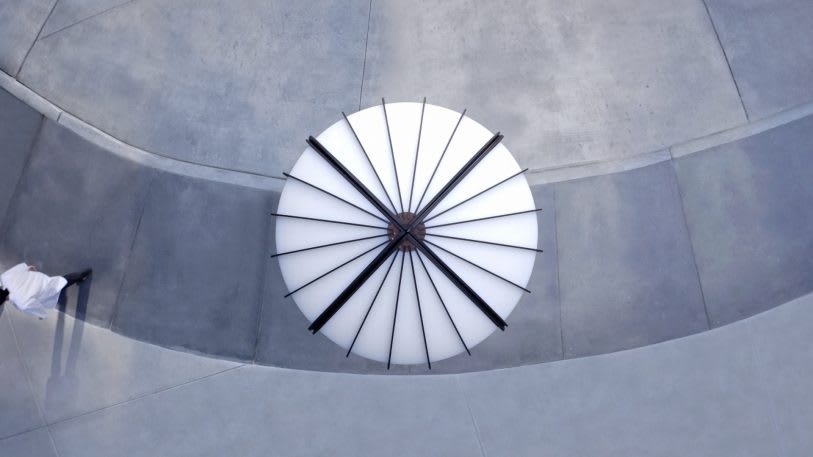
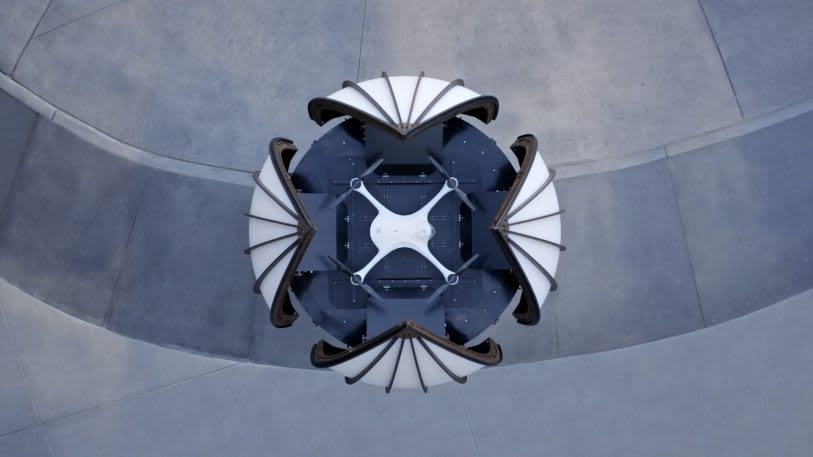
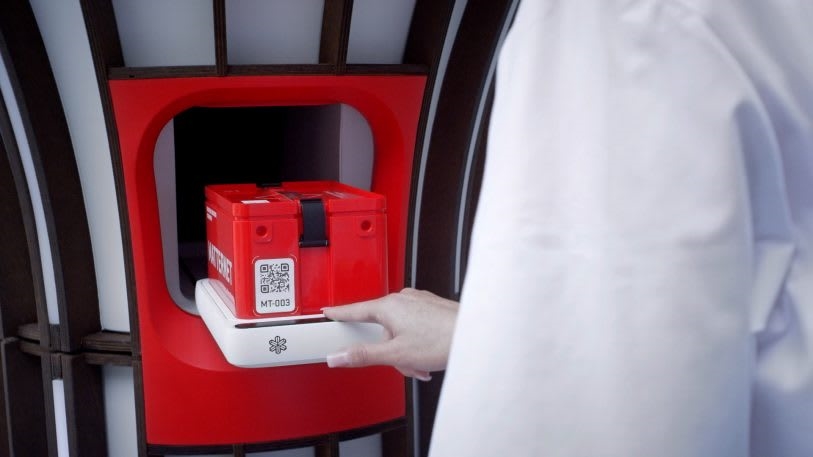
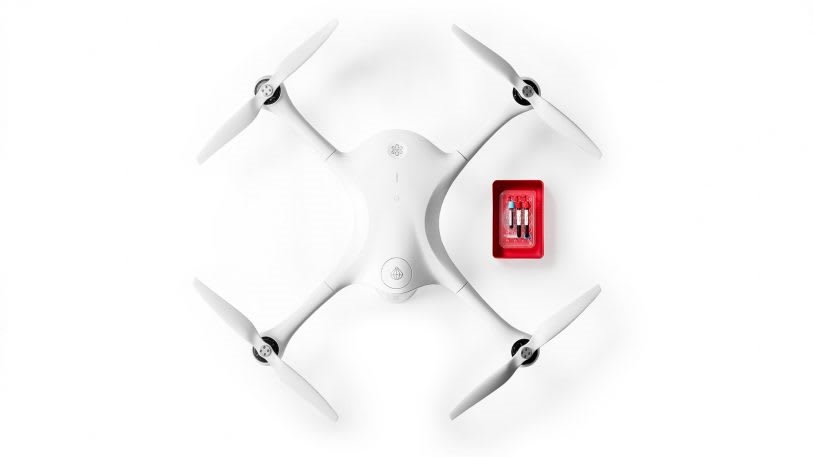
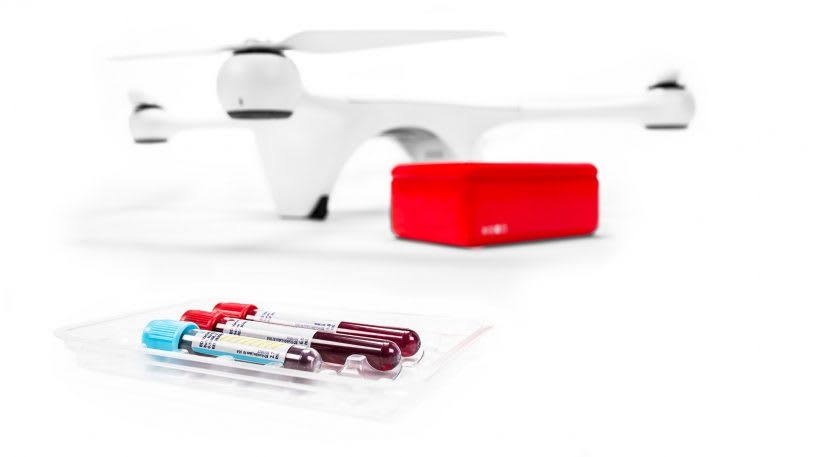
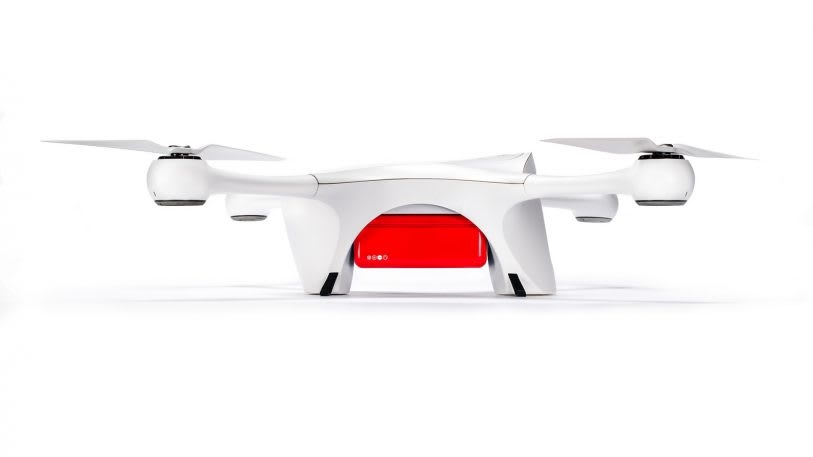
(23)

